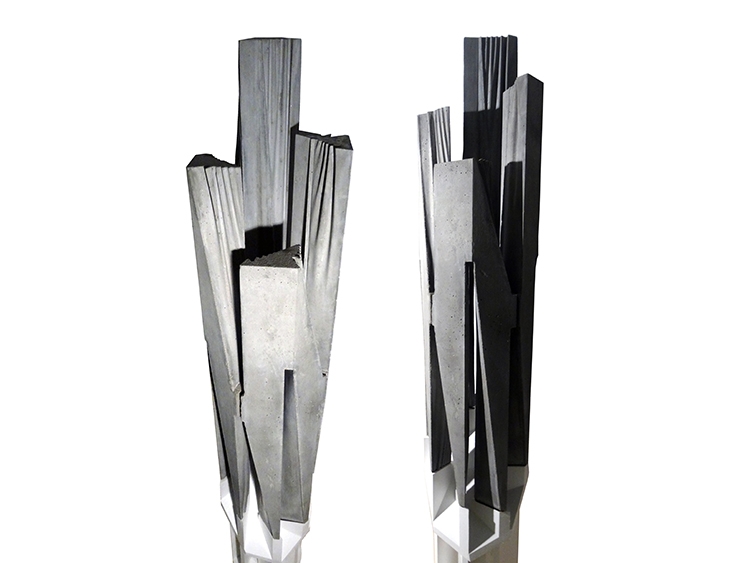Column_3: Bundling and Wedging (part 3 out of 9 from New Orders)
2014
Columns 3 to 5 experiment with different implementations of central courtyards in tower building. The introduction of inner courtyards in high rises has not gone uncontested overtime. Not for their lack of attributes to community living, but rather for their deficiency to perform environmentally. Besides air and noise issues (void acting as resonance chamber), raising privacy concerns, the scarcity of natural light penetration during certain periods of the year poses the main challenge for this specific typology. To verify this assumption, field studies and environmental analysis were conducted on two notable 30-storey courtyard projects in Hong Kong (Lai Tak and Wah Fu estates). In summary, it was proven that for most time of the year, the lower half of these square and circular courtyards receives an insufficient amount of natural lighting.Instead of defining courtyard as mass subtraction, column 3 reverses the condition by taking an additive approach towards its spatial and structural description. Four inverted V-shaped towers are proposed to delimit a central courtyard and to make-up for a larger point-block complex. This bundle of slender towers, known as pencil type tower, facilitates the circulation of air and the penetration of light at grade, while retaining a larger bulk of the block up above. To do so, each pencil tower splits downwards into small footprints, demarking a thin and tall void space, wedged between each leg. The splintering of the column into 8 discrete footings becomes more agile in receiving a hostile ground characterized by extreme topography.
The fabrication method for this prototype focuses on the making of the warped plug-ins for the spatial description of the voids. The casting procedure for each leg is a one-step process and the formwork is made of two main parts, including six plugs. The warping of the plugs allows each of the leg elements to realign radially as a whole and reach greater lateral stability and mass equilibrium of the column. The warping geometry is materialized by a sheet of fabric stretched over an irregular frame. After casting, the decentering of the warped plug-ins was facilitated by the fact that each plug is conceived as a wedge. Each 4 legs were cast reusing the same two-part formwork, only the plugs were replaced at each casting cycle.















